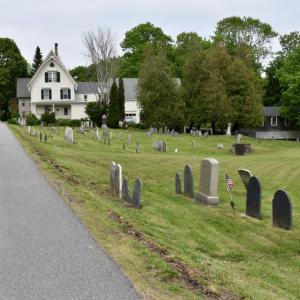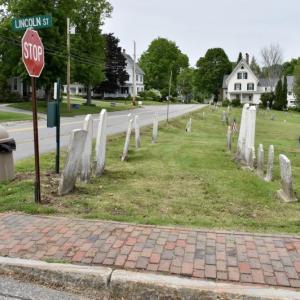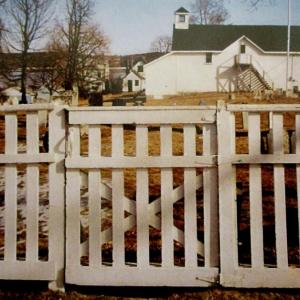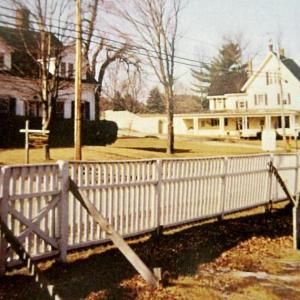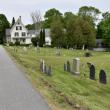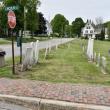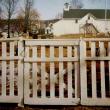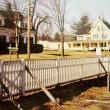Two committee members quit following removal of Ancient Cemetery’s fence
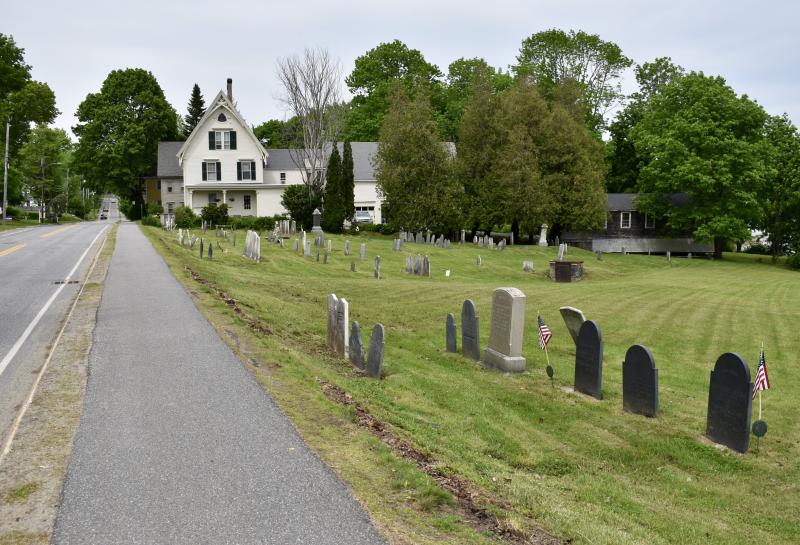 The cemetery minus its familiar white fence. PHIL DI VECE/Wiscasset Newspaper
The cemetery minus its familiar white fence. PHIL DI VECE/Wiscasset Newspaper
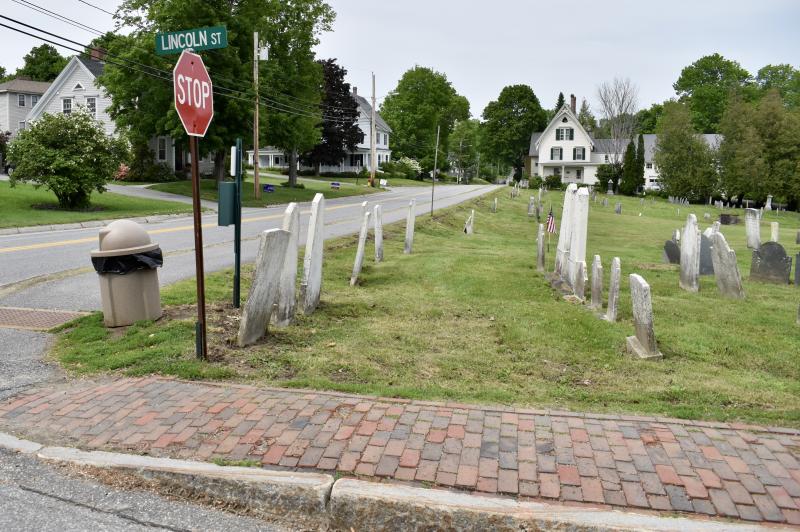 The Ancient Cemetery looking north up Federal Street as seen from the corner of Lincoln Street. PHIL DI VECE/Wiscasset Newspaper
The Ancient Cemetery looking north up Federal Street as seen from the corner of Lincoln Street. PHIL DI VECE/Wiscasset Newspaper
 Picture taken in the 1980s showing an entry gate from Federal Street. Courtesy of Steve Christiansen
Picture taken in the 1980s showing an entry gate from Federal Street. Courtesy of Steve Christiansen
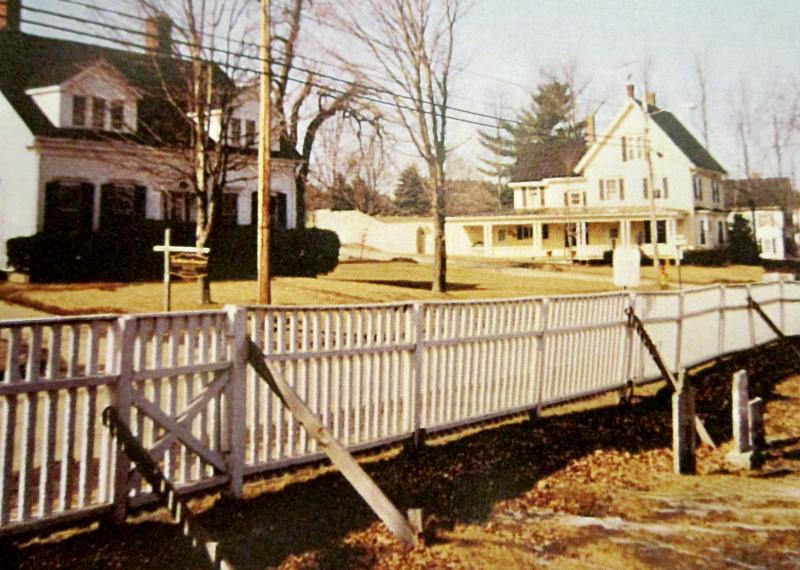 Wooden braces were used to shore up the fencing in the 1980s, the last time the fence was replaced. Courtesy of Steve Christiansen
Wooden braces were used to shore up the fencing in the 1980s, the last time the fence was replaced. Courtesy of Steve Christiansen
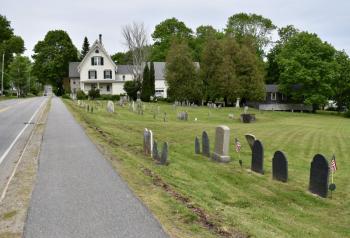 The cemetery minus its familiar white fence. PHIL DI VECE/Wiscasset Newspaper
The cemetery minus its familiar white fence. PHIL DI VECE/Wiscasset Newspaper
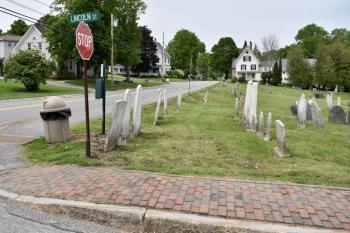 The Ancient Cemetery looking north up Federal Street as seen from the corner of Lincoln Street. PHIL DI VECE/Wiscasset Newspaper
The Ancient Cemetery looking north up Federal Street as seen from the corner of Lincoln Street. PHIL DI VECE/Wiscasset Newspaper
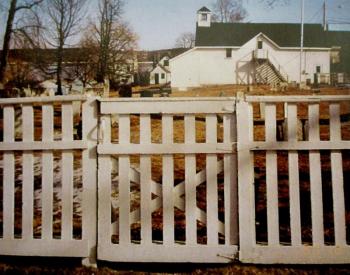 Picture taken in the 1980s showing an entry gate from Federal Street. Courtesy of Steve Christiansen
Picture taken in the 1980s showing an entry gate from Federal Street. Courtesy of Steve Christiansen
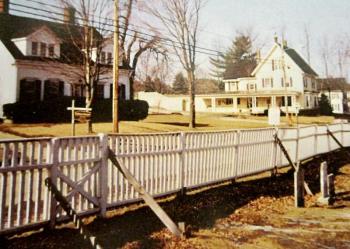 Wooden braces were used to shore up the fencing in the 1980s, the last time the fence was replaced. Courtesy of Steve Christiansen
Wooden braces were used to shore up the fencing in the 1980s, the last time the fence was replaced. Courtesy of Steve Christiansen
Members of an advisory committee are exasperated over the removal of a fence around Wiscasset’s Ancient Cemetery. The white wooden fence bordering Federal and Lincoln streets was removed by the public works department Wednesday, June 2 – the morning after the committee met with the selectboard when committee members said there was no mention the fence was coming down. Two committee members have resigned over this.
“All of us were a little shocked the fence was taken down,” said Judy Flanagan, one of seven residents making up the committee appointed by the selectboard. Flanagan and committee member David Sawyer both announced their resignations when the committee met Monday evening.
“They (the select board) never gave any indication they intended doing this when we met with them the night before,” Flanagan told Wiscasset Newspaper. “We were there at their invitation, and they asked us what we as a committee felt was needed most. We told them replacing the fence at the Ancient Cemetery was high on our list.”
Flanagan said the committee made it clear to the board, they weren’t ready to make a recommendation on a new fence but had designs they were considering. “They never gave us any indication they intended to have the fence removed the following day. When I asked how come, Town Manager Dennis Simmons told me the fence had gotten so bad it had become a liability,” she added.
“The fence looked bad, but it was in no danger of falling down,” said Peter Wells, another Cemetery Committee member. “It couldn’t have been in too bad of shape because a front-end loader and chainsaws were needed to remove it.”
Wells and wife Terri live directly across from the Ancient Cemetery on Federal Street. A registered landscape architect, he created three different designs for a new fence and entryway. One included adding an archway with stone steps leading into the historic burial grounds that have become a museum of sorts attracting many visitors.
A number of fence designs have been suggested, continued Wells. They included using wood, a composite material, vinyl or metal. “Now the fence is gone, it puts pressure on the committee to come up with its recommendation; I wish they’d left the old fence there until we were ready.”
Terri Wells said the fence removal was premature. “Now it’s gone and it’s left the burial grounds wide open and prone to vandalism,” she said. “Many of its gravestones are close to 200 years old and some are very fragile. The fence had been reinforced with metal posts and was in no danger of falling over,” she said.
Helping remove the fence was Steve Christiansen, another member of the Cemetery Committee. Christiansen, who retired from the town crew last year, returned to work part-time for the highway department for the summer. Christiansen may know the Ancient Cemetery better than anyone; several of his ancestors are buried there. He’s helped maintain the grounds and has repaired a number of the broken stones.
“One thing I can say for certain is until now no one living has ever seen the Ancient Cemetery without a white fence around it,” he said. “Not having a fence there takes some getting used to, but it had to come down, a number of its posts were rotten at the bottom and it had become an eyesore.” Christiansen’s preference would be a new fence similar to the one taken down. “The closer to what was there the better, but with an entry gate added from the sidewalk on Federal Street as it used to be.” He told the newspaper several years ago at least three different fence options were proposed, money was earmarked for the work but nothing was done. “I can understand why people are frustrated,” he said.
All seven committee members were present for Monday’s meeting at the town office along with Simmons, Selectman Katharine Martin-Savage Public Workf and Public Works Director Ted Snowdon.
Committee Chairman Becky Applin said no one was questioning the select board’s authority to have the fence taken down. “I really felt insulted we weren’t informed the night before that they planned to take it down,” she said.
Fellow committee member Anthony Rauseo said the fence’s removal was short-sighted and he was saddened by the decesion. “With the way things are in the construction industry, we might not get a new fence installed for months, or maybe even next year. It should have been left there until it could be replaced. Rauseo said the town would now have to deal with dogs defecating on the cemetery grounds and the potential for damage being done to the memorial stones.
Simmons said there had been a breakdown in communications and he apologized. “I stubbed my toe on this one and have admitted so,” he said. But Simmons reminded the committee its role was advisory.
Sawyer commented what was the sense of a committee making a recommendation only to have the selectboard arbitrarily toss it aside.
Martin-Savage said the fence’s removal had been talked about and agreed to months ago. “I think we need to move on, apologies have been made. We’ve got to decide now what’s got to be done there.”
In an email to the newspaper, selectboard Chairman Pam Dunning said the decision to remove the fence had been made in March. “There was considerable rot and the Town could be held liable if there were any accidents involving the fence,” she wrote. “There was a consensus of the Board that the fence would have to be removed.
“Removing the fence was the responsible thing to do. It was in bad condition and could be a liability,” she added.
Dunning was asked if she thought a temporary barrier might be erected along the sidewalks until town officials decide what to do about replacing the fence. “It will be fine as is until a new fence can be installed,” she wrote.
Early town records state monies were raised to erect a fence around the cemetery as long ago as 1767 with the stipulation the fence continue to be maintained and kept in good repair. The cemetery’s oldest stone is dated 1739 marking the grave of Joshua Pool, 39. According to the legend, Pool drowned in the Sheepscot River after a bear capsized his canoe.
Near the center of the grounds lies a time-worn flat stone marking the resting place of David Silvester, a magistrate, shipowner and first Masonic Master of Lincoln Lodge and early leader of the community. In the 19th century the Masons had this stone re-engraved. There are several veterans of the American Revolution including Manasseh Smith, a chaplain during the War for Independence. His memorial stone, severely broken and repaired, has a sun carved into it and the Latin inscription, Orturus occidit, “He sinks destined to rise.” Next to him rests his wife; a half-moon is carved into her stone.
Another stone marks the grave of Ezekiel Averill, a bodyguard to General George Washington. Averill died at age 95 years and six months. The square enclosure surrounded by an iron fence is the prior burial place of Chief Justice Samuel Sewall who died suddenly while holding court at Lincoln County Courthouse in 1814. His body was later disinterred and moved to a family plot in Massachusetts.
Event Date
Address
United States

